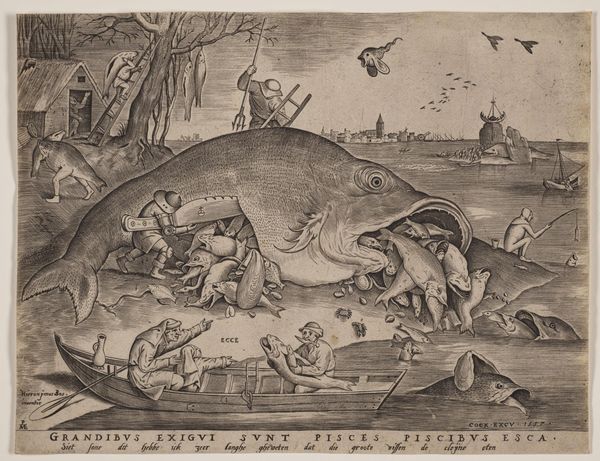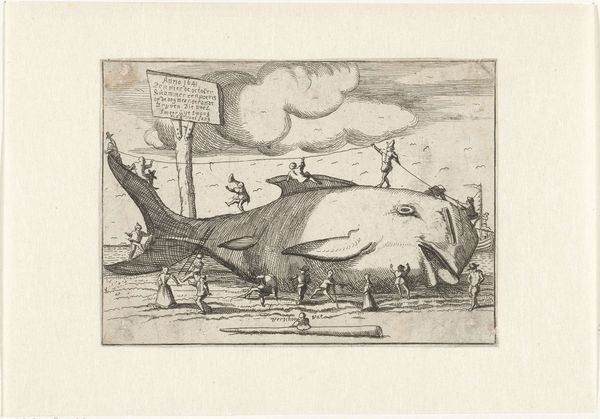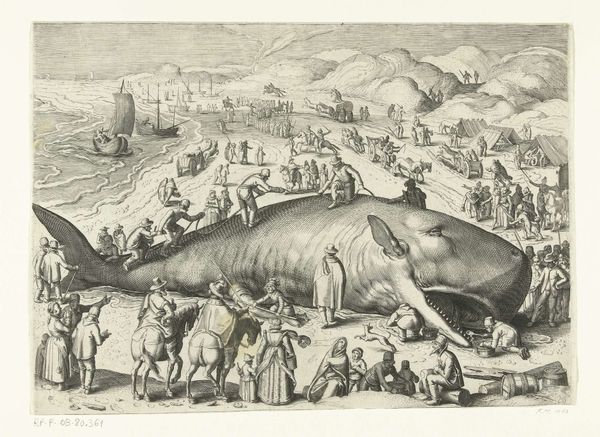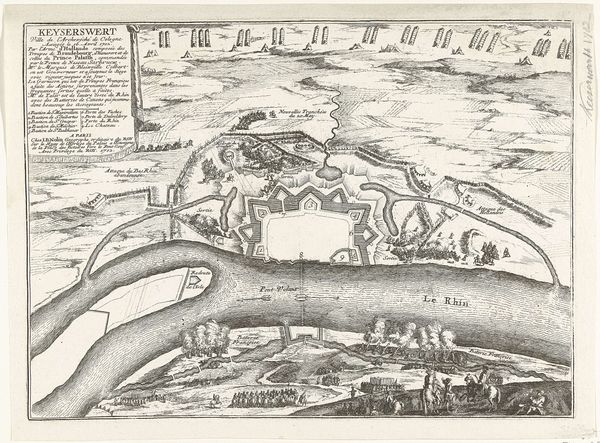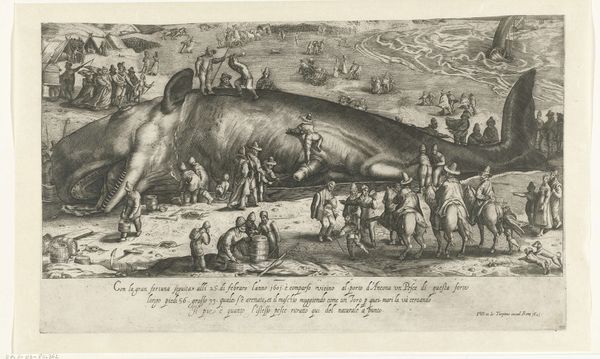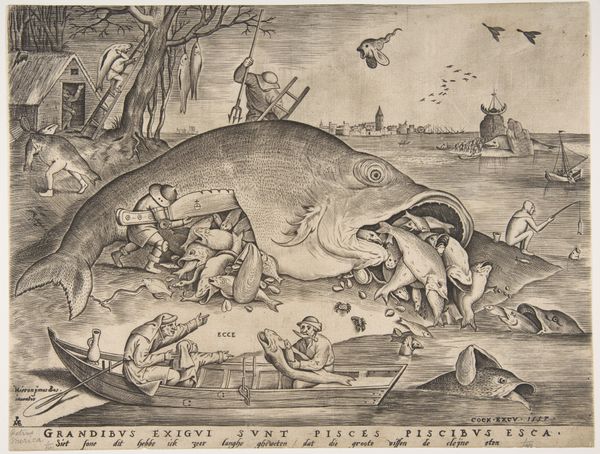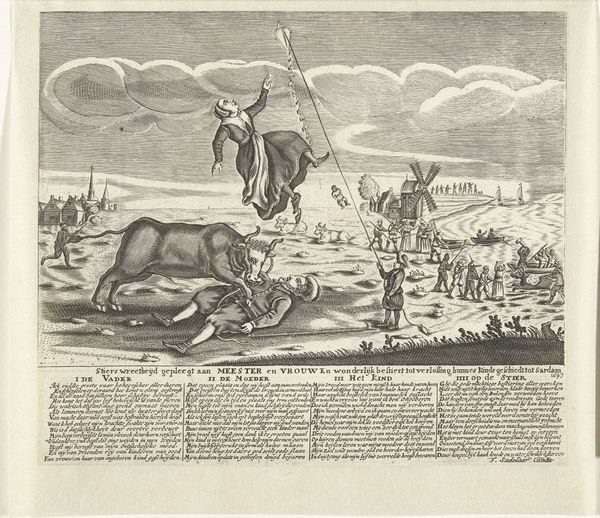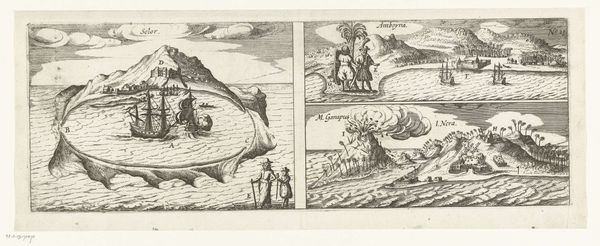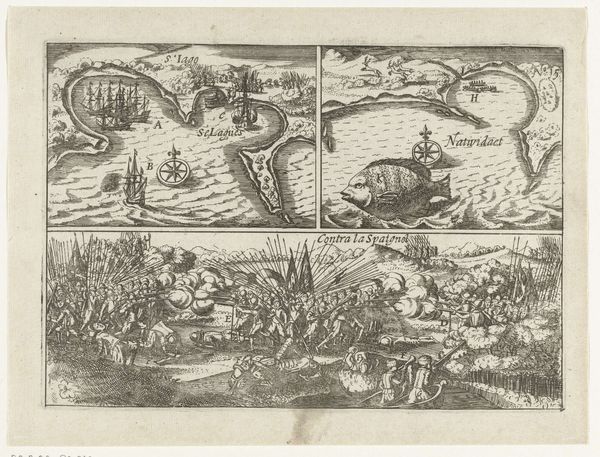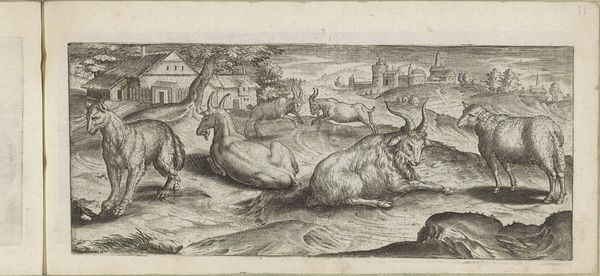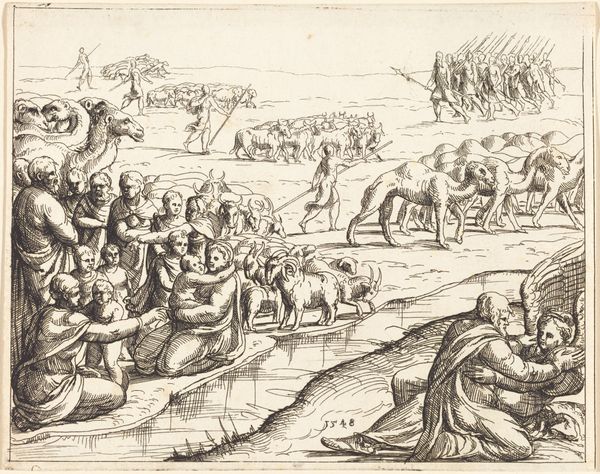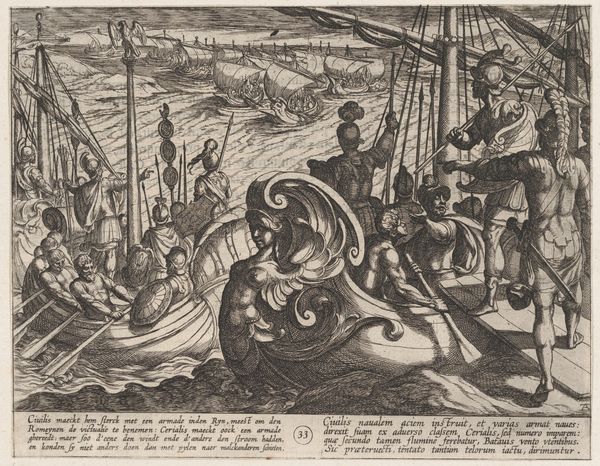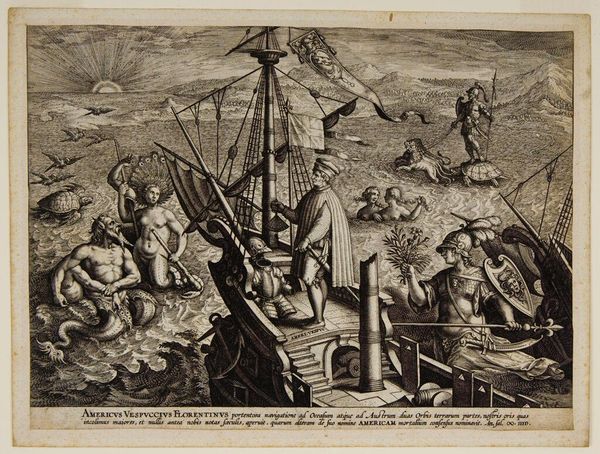
print, engraving
#
narrative-art
#
pen drawing
# print
#
old engraving style
#
landscape
#
figuration
#
11_renaissance
#
history-painting
#
early-renaissance
#
engraving
Dimensions: height 227 mm, width 291 mm
Copyright: Rijks Museum: Open Domain
Curator: The sight of that giant creature against the backdrop of the Dutch coast... it’s captivating. You can almost smell the salt and decay. Editor: Indeed. What we're looking at is an engraving from 1598, titled "Stranded Whale near Berckhey". It depicts exactly that – a beached whale and a flurry of human activity around it. The piece is attributed to an anonymous artist. Curator: "Flurry" is an understatement! It's like a surreal carnival. People are climbing on it, peering inside. What does that tell us about how people viewed nature back then? It's not exactly reverence. Editor: Precisely! Whales, particularly stranded ones, occupied a fascinating intersection of natural phenomenon and political symbol. A beached whale was a public event, economically useful, yes, but also a portent, a message—usually divine displeasure. This engraving visualizes that public spectacle and makes it legible to a broader audience. Curator: The way everyone’s gathered, it almost reminds me of a Pieter Bruegel scene. There’s a real sense of community, of shared experience… even wonder. It also reminds me of Moby Dick—a cautionary tale about our interactions with nature, a leviathan both vulnerable and menacing. Editor: That resonates with my understanding of the piece. The whale's passivity also allows the townsfolk in the artwork to seize power over something uncontrollable, even monstrous. A sense of "community," in a Foucauldian sense, isn't all neighborly help. Curator: There's also something slightly unsettling. The scale seems off – those figures inside the whale’s mouth, for example, look… theatrical. I'm curious to feel the cold, dark cavernous interior as something both dangerous, promising and perhaps absurd, maybe a little like what awaits all of us in the dark. Editor: Well, these prints circulated widely, so exaggerating some details ensured the image was sensational and legible, making a symbolic drama to be bought and sold, especially to a largely illiterate audience. Curator: Makes sense. Ultimately, "Stranded Whale near Berckhey" strikes me as a meditation on power dynamics, community, and our ambivalent relationship with nature. Editor: For me, it highlights how images—even those seemingly objective—shape and reflect a community’s fears, beliefs, and control mechanisms at a specific moment in history.
Comments
No comments
Be the first to comment and join the conversation on the ultimate creative platform.
